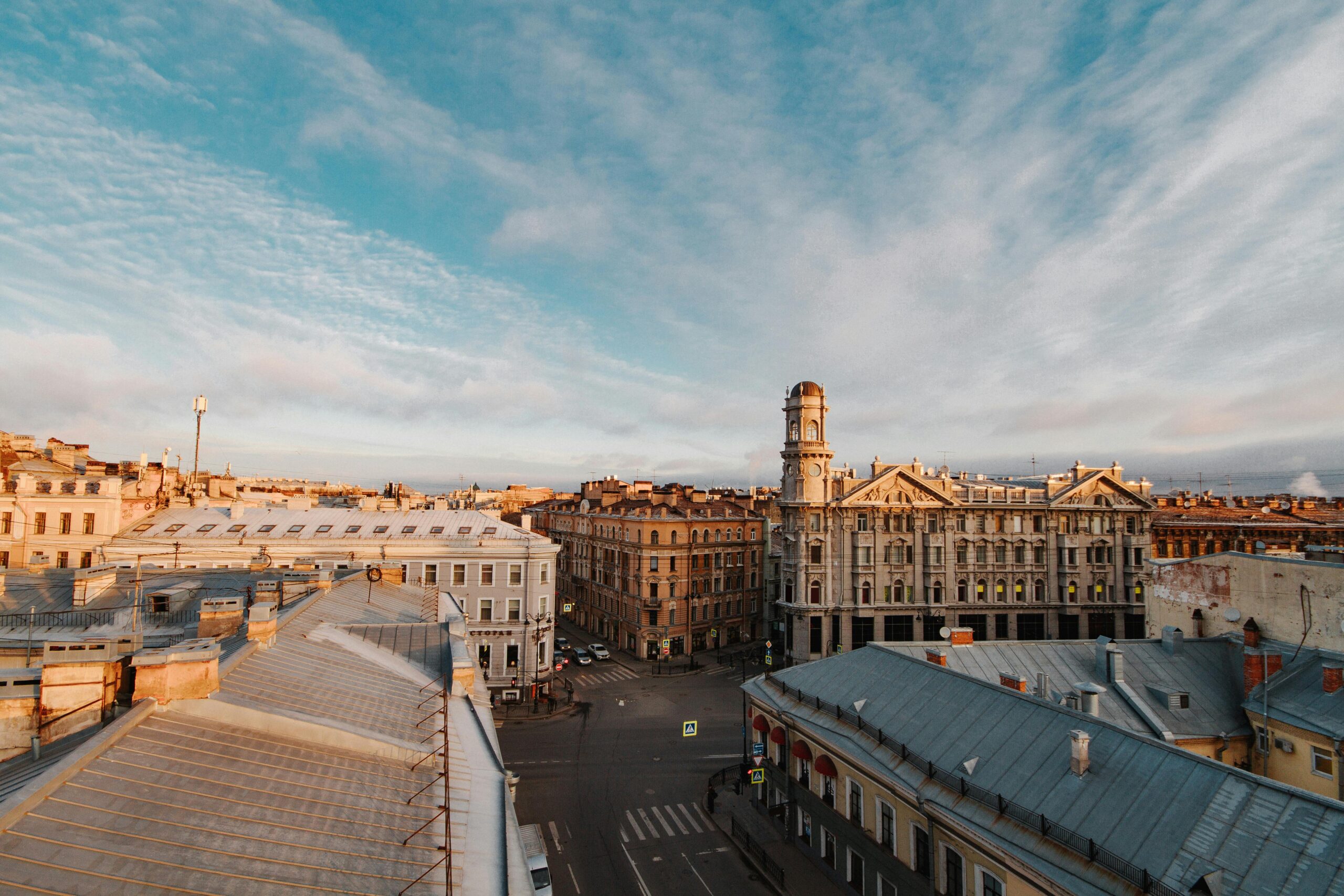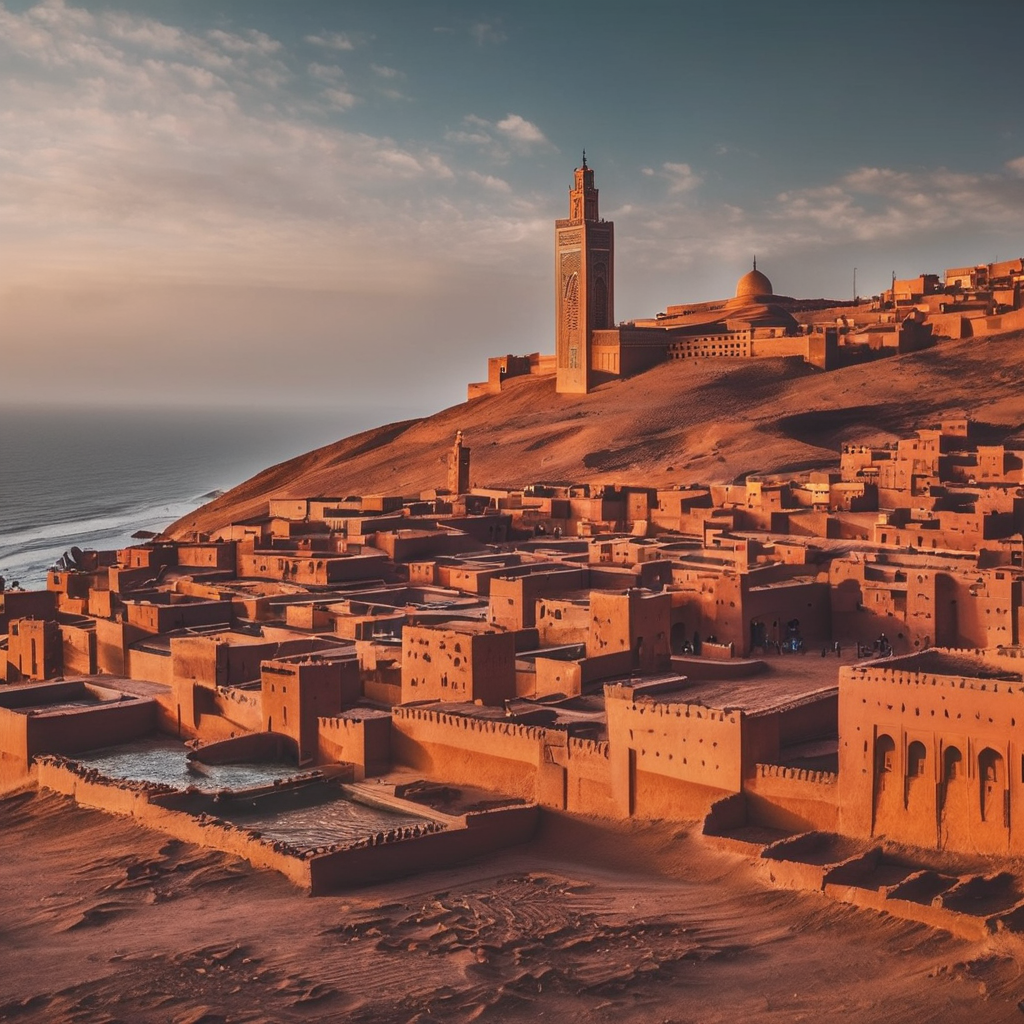In the world of architecture, certain structures transcend mere functionality to become iconic symbols of human ingenuity and creativity. These architectural wonders not only serve as landmarks in their respective cities but also inspire awe and admiration for their design, innovation, and cultural significance. Join us on a virtual tour as we explore some of the most iconic buildings around the globe, marveling at their beauty and uncovering the stories behind their creation.
History and Construction
The Eiffel Tower stands as an iconic symbol of Paris, France, but its origins are rooted in the 1889 World’s Fair, held in celebration of the 100th anniversary of the French Revolution. Designed by engineer Gustave Eiffel, the tower was initially met with skepticism and criticism from some Parisians who viewed its design as too radical. However, Eiffel’s vision prevailed, and construction began in 1887, taking a mere two years, two months, and five days to complete.
The construction of the Eiffel Tower was a remarkable feat of engineering for its time. Built using over 18,000 individual iron pieces, the tower’s assembly required precise planning and coordination. Its innovative use of wrought iron, a material known for its strength and flexibility, allowed for the tower’s impressive height of 324 meters (1,063 feet) upon completion.
Design and Innovation
The design of the Eiffel Tower was revolutionary for its era, showcasing a blend of artistic beauty and structural ingenuity. Composed of four lattice-like iron legs that taper upwards to meet at a central point, the tower’s design maximizes strength while minimizing material usage. This lattice structure not only provides stability against wind and other forces but also allows for transparency, granting breathtaking views of Paris from its observation decks.
Gustave Eiffel’s innovative approach to construction techniques played a pivotal role in the tower’s design. Each piece of iron was prefabricated off-site and then assembled using more than 2.5 million rivets, a method that expedited construction while ensuring precision and durability. Additionally, the tower’s open-frame design significantly reduced wind resistance, a crucial consideration for such a tall structure.
Cultural Significance
Beyond its architectural marvel, the Eiffel Tower holds profound cultural significance for both Parisians and people around the world. Serving as a symbol of French national pride and innovation, the tower has become synonymous with Paris itself, attracting millions of visitors annually.
Moreover, the Eiffel Tower has been featured prominently in countless works of art, literature, and film, further cementing its status as an enduring cultural icon. Its illuminated facade, particularly dazzling at night, has inspired countless romantic gestures and proposals, making it a symbol of love and romance for couples worldwide.
Architectural Visionary: Frank Lloyd Wright
The Guggenheim Museum in New York City stands as a testament to the visionary genius of its architect, Frank Lloyd Wright. Designed in the mid-20th century, the museum’s construction was not without controversy, as Wright’s unconventional approach challenged traditional architectural norms. However, his bold vision ultimately resulted in one of the most iconic buildings in the world.
Frank Lloyd Wright envisioned the Guggenheim as a “temple of the spirit,” a space where art and architecture harmoniously coexist to inspire and uplift visitors. His organic architecture philosophy, characterized by seamless integration with the surrounding environment, is evident in the museum’s spiraling form and flowing interior spaces. Wright rejected the idea of traditional museum layouts in favor of a continuous ramp that spirals gently upward, allowing visitors to experience the artwork in a more immersive and organic manner.
Unique Design and Functionality
The Guggenheim Museum’s unique design sets it apart from any other building in the world. Its cylindrical shape and distinctive spiral ramp are instantly recognizable, drawing visitors from around the globe to marvel at its architectural beauty. Unlike traditional museum layouts with separate rooms and corridors, the Guggenheim’s open interior space creates a sense of fluidity and movement, encouraging visitors to explore and discover art at their own pace.
Functionality was a key consideration in Wright’s design, as he sought to create a space that not only showcases art but also enhances the viewing experience. Natural light filters through the museum’s skylight, illuminating the artwork below and creating a dynamic interplay between light and shadow. The spiral ramp design allows for a continuous flow of foot traffic, eliminating the need for stairs and ensuring accessibility for all visitors.
Influence on Modern Architecture
The Guggenheim Museum’s influence on modern architecture cannot be overstated. Wright’s innovative use of space, materials, and form challenged the prevailing architectural conventions of his time, inspiring future generations of architects to think outside the box. The museum’s organic, sculptural design has been cited as a precursor to the architectural movement known as “blobitecture,” which emphasizes fluid, amoeba-like shapes and forms.
Moreover, the Guggenheim’s success as a museum space has inspired the design of other cultural institutions around the world. Its unconventional layout has been replicated in various forms, demonstrating the enduring legacy of Frank Lloyd Wright’s vision. As a result, the Guggenheim Museum continues to serve as a beacon of innovation and creativity in the world of architecture, reminding us of the transformative power of visionary design.
Architectural Marvel by Jørn Utzon
The Sydney Opera House stands as a testament to the visionary genius of Danish architect Jørn Utzon. Designed in the 1950s and completed in 1973, the Opera House is widely regarded as one of the most iconic buildings of the 20th century. Utzon’s vision for the Opera House was inspired by the natural forms of the surrounding harbor, with its distinctive sail-like shells evoking the image of ships at sea. Despite facing numerous challenges during construction, including budget overruns and political controversies, Utzon’s perseverance ultimately resulted in the creation of a true architectural masterpiece.
Iconic Design and Structural Engineering
The Sydney Opera House’s iconic design and structural engineering are marvels of modern architecture. Composed of a series of interlocking concrete shells, the building’s roof structure is both visually striking and structurally sound. Utzon’s use of innovative construction techniques, including precast concrete panels and a pioneering computer-aided design system, allowed for the realization of his ambitious vision. The building’s sail-like shells, which appear to float effortlessly above the harbor, are not only aesthetically pleasing but also serve a functional purpose, providing shade and protection from the elements for both visitors and performers.

Cultural Hub and Global Landmark
The Sydney Opera House has become much more than simply a performing arts venue—it is a cultural hub and global landmark that attracts millions of visitors from around the world each year. Its unique design and stunning waterfront location make it an iconic symbol of Sydney and Australia as a whole. Beyond its architectural significance, the Opera House plays a vital role in Australia’s cultural landscape, hosting a diverse range of performances, events, and exhibitions that celebrate the arts in all their forms. From classical concerts and ballet performances to contemporary theater and multimedia installations, the Opera House offers something for everyone, enriching the cultural fabric of the city and fostering a sense of community and belonging.
Engineering Feat: Tallest Building in the World
The Burj Khalifa in Dubai, United Arab Emirates, stands as a towering testament to human ingenuity and engineering prowess. Since its completion in 2010, the Burj Khalifa has held the title of the tallest building in the world, soaring to an astonishing height of 828 meters (2,717 feet). Its construction was a remarkable engineering feat, requiring innovative techniques and meticulous planning to overcome the challenges posed by such a monumental structure.
The sheer scale of the Burj Khalifa presented numerous engineering challenges, from designing a foundation capable of supporting its immense weight to ensuring the safety and stability of its slender, tapering form. Advanced construction methods, including the extensive use of high-strength concrete and sophisticated wind engineering studies, were employed to ensure the building’s structural integrity and resilience against the elements. The result is a marvel of modern engineering—a skyscraper that pushes the boundaries of what is possible, reaching towards the sky with unmatched elegance and grace.
Futuristic Design and Technological Advancements
Beyond its impressive height, the Burj Khalifa is renowned for its futuristic design and cutting-edge technological advancements. Designed by the renowned architectural firm Skidmore, Owings & Merrill (SOM), the building’s sleek, streamlined form is inspired by the geometry of a desert flower and the rhythmic patterns found in Islamic art. Its shimmering glass facade reflects the ever-changing hues of the desert sky, creating a dynamic and visually stunning presence on the Dubai skyline.
Technological innovations abound within the Burj Khalifa, from its state-of-the-art elevator system, which transports visitors to its observation decks at breathtaking speeds, to its advanced sustainability features, including energy-efficient lighting and water-saving technologies. The building’s exterior is adorned with thousands of LED lights, which illuminate the night sky in a dazzling display of color and light, further enhancing its futuristic aesthetic.
Symbol of Dubai’s Growth and Ambition
The Burj Khalifa serves as a powerful symbol of Dubai’s rapid growth and ambitious vision for the future. Rising majestically from the heart of the city’s bustling downtown district, the skyscraper embodies Dubai’s transformation from a small fishing village to a global metropolis and economic powerhouse. Its iconic silhouette has become synonymous with the city itself, representing Dubai’s aspirations to become a world leader in commerce, tourism, and innovation.
Moreover, the Burj Khalifa has played a pivotal role in shaping Dubai’s identity as a hub of luxury and opulence, attracting millions of visitors each year who come to marvel at its splendor and scale. From its exclusive residential apartments and world-class restaurants to its observation decks offering panoramic views of the city below, the Burj Khalifa offers a glimpse into the extravagant lifestyle and ambition that define modern Dubai.
Monument of Love: Shah Jahan’s Tribute to His Wife
The Taj Mahal, located in Agra, India, is perhaps the most famous symbol of love in the world. Commissioned by the Mughal emperor Shah Jahan in memory of his beloved wife, Mumtaz Mahal, who died during childbirth, the Taj Mahal is a testament to the enduring power of love and devotion. Construction of the Taj Mahal began in 1632 and took over 20,000 artisans and craftsmen more than two decades to complete. Shah Jahan spared no expense in creating a monument befitting his wife’s memory, using precious materials such as white marble from Makrana, India, and semi-precious stones sourced from across the Mughal Empire. The result is a breathtaking masterpiece of Mughal architecture, renowned for its ethereal beauty and exquisite craftsmanship.
Architectural Grandeur and Mughal Influence
The Taj Mahal’s architectural grandeur is a testament to the skill and creativity of its Mughal architects and artisans. The main mausoleum is flanked by four minarets, each standing over 40 meters tall, and surrounded by lush gardens and reflecting pools. The symmetrical layout of the Taj Mahal reflects the principles of Mughal garden design, with geometric patterns and water features adding to its aesthetic appeal.
The intricate details of the Taj Mahal’s design, from its delicately carved marble screens to its intricate inlay work and calligraphy, showcase the mastery of Mughal craftsmanship. The use of geometric and floral motifs, typical of Mughal art and architecture, adds to the monument’s beauty and symbolism. Every aspect of the Taj Mahal’s design, from its layout to its decorative elements, is imbued with meaning and significance, reflecting the cultural and religious influences of the Mughal Empire.
UNESCO World Heritage Site and Timeless Symbol of India
The Taj Mahal’s status as a UNESCO World Heritage Site underscores its importance as a cultural and historical treasure. Recognized for its outstanding universal value, the Taj Mahal attracts millions of visitors from around the world each year, drawn by its timeless beauty and romantic allure. Beyond its architectural significance, the Taj Mahal holds profound cultural and religious significance for the people of India, serving as a symbol of national pride and identity.
As one of the most iconic landmarks in the world, the Taj Mahal continues to inspire awe and admiration centuries after its completion. Its timeless beauty and enduring legacy remind us of the power of love and the human capacity for creativity and expression. Whether viewed from afar or experienced up close, the Taj Mahal remains a source of wonder and inspiration, captivating hearts and minds with its unparalleled splendor.
FAQs
Q. What are some examples of iconic architectural wonders around the world?
A. There are many iconic architectural wonders across the globe, including the Eiffel Tower in Paris, the Taj Mahal in India, the Sydney Opera House in Australia, the Burj Khalifa in Dubai, and the Colosseum in Rome.
Q. Can I visit these buildings as a tourist?
A. Yes, many of these architectural wonders are open to the public for tours. However, it’s a good idea to check ahead for any restrictions or ticket requirements, especially for popular tourist destinations.
Q. Are there guided tours available for these buildings?
A. Yes, guided tours are often available for many iconic buildings, providing visitors with in-depth information about the architecture, history, and significance of each structure. These tours can enhance your experience and understanding of these architectural wonders.
Q. How can I learn more about the architecture of these buildings?
A. There are various resources available for learning more about the architecture of iconic buildings, including books, documentaries, online articles, and audio guides during tours. You can also explore architectural websites and forums for detailed discussions and analyses.
Q. Are there any restrictions on photography inside these buildings?
A. Photography policies vary from one building to another. Some may allow photography for personal use, while others may have restrictions or require a special permit for commercial photography. It’s best to check the rules and regulations of each building before taking photographs.
Conclusion
As we conclude our tour of these architectural wonders, it becomes evident that these buildings are more than just structures; they are testaments to human creativity, ambition, and cultural identity. From the iconic silhouette of the Eiffel Tower to the majestic curves of the Sydney Opera House, each building tells a unique story and leaves a lasting impression on all who behold them. As we continue to push the boundaries of architectural design, let us remember the legacy of these iconic buildings and draw inspiration from their timeless beauty and innovation.




